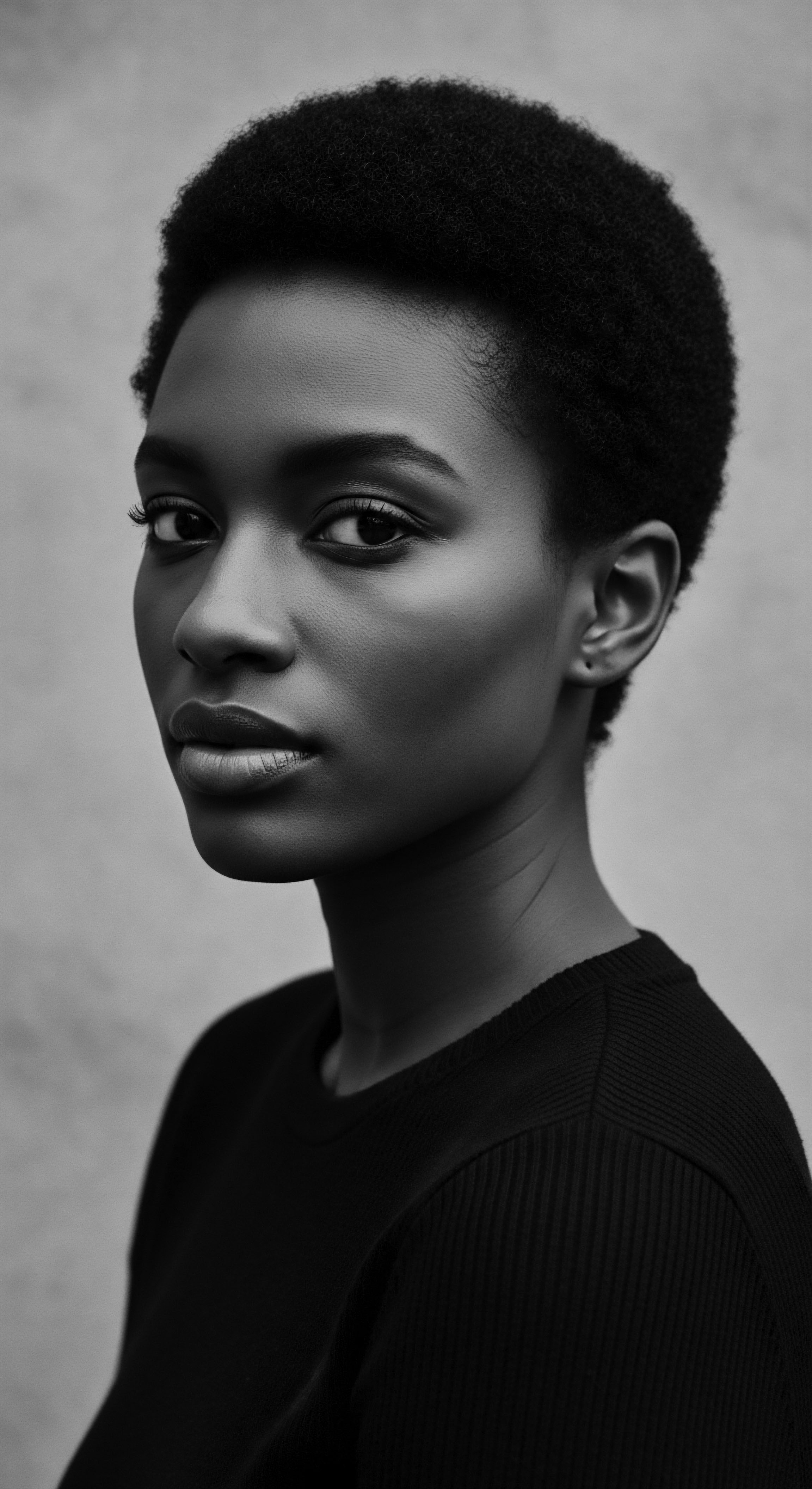
Roots
To contemplate the role of historical tools in the cultural expression of textured hair is to begin a profound conversation, one that resonates deeply within the ancestral memory of Black and mixed-race communities. It means looking beyond mere function, moving towards the very essence of identity, connection, and survival. Every comb, every adornment, every hand-carved implement held a story, a language spoken not in words but in intricate patterns and careful cultivation. This exploration delves into how these simple instruments transcended their utilitarian purpose, becoming conduits of heritage, communication, and enduring self-affirmation.
From the sweeping plains of ancient Africa to the fraught landscapes of the diaspora, textured hair has always been a powerful canvas. It is a biological marvel, a unique helix of protein and keratin, yet its true significance has always rested in its profound cultural weight. Our journey into historical tools for textured hair begins with understanding the fundamental nature of this hair itself, not as a deviation from a norm, but as a source of inherent strength and beauty, a testament to deep ancestral wisdom and resilience. The tools used were not just for styling; they were extensions of hands guided by generations of knowledge.

Hair Anatomy and Physiology from an Ancestral Perspective
The very architecture of textured hair, with its unique curl patterns ranging from loose waves to tight coils and kinks, demands a specific approach to care. Unlike straight hair, textured hair possesses an elliptical cross-section, which contributes to its characteristic curl. This shape means that natural oils produced by the scalp, known as sebum, struggle to travel down the length of the strand, leaving it more prone to dryness. This inherent biological truth shaped ancestral practices, compelling communities to seek methods and tools that would mitigate moisture loss and preserve hair health.
Ancient African civilizations, long before modern scientific classification systems, instinctively understood these physiological needs. They recognized that dry hair was brittle hair, and brittle hair would break. Their methods, passed down through oral tradition and practiced daily, centered on nourishing and protecting the hair. This foundational understanding, deeply rooted in observing the hair’s natural tendencies and vulnerabilities, formed the initial blueprint for the tools they crafted.
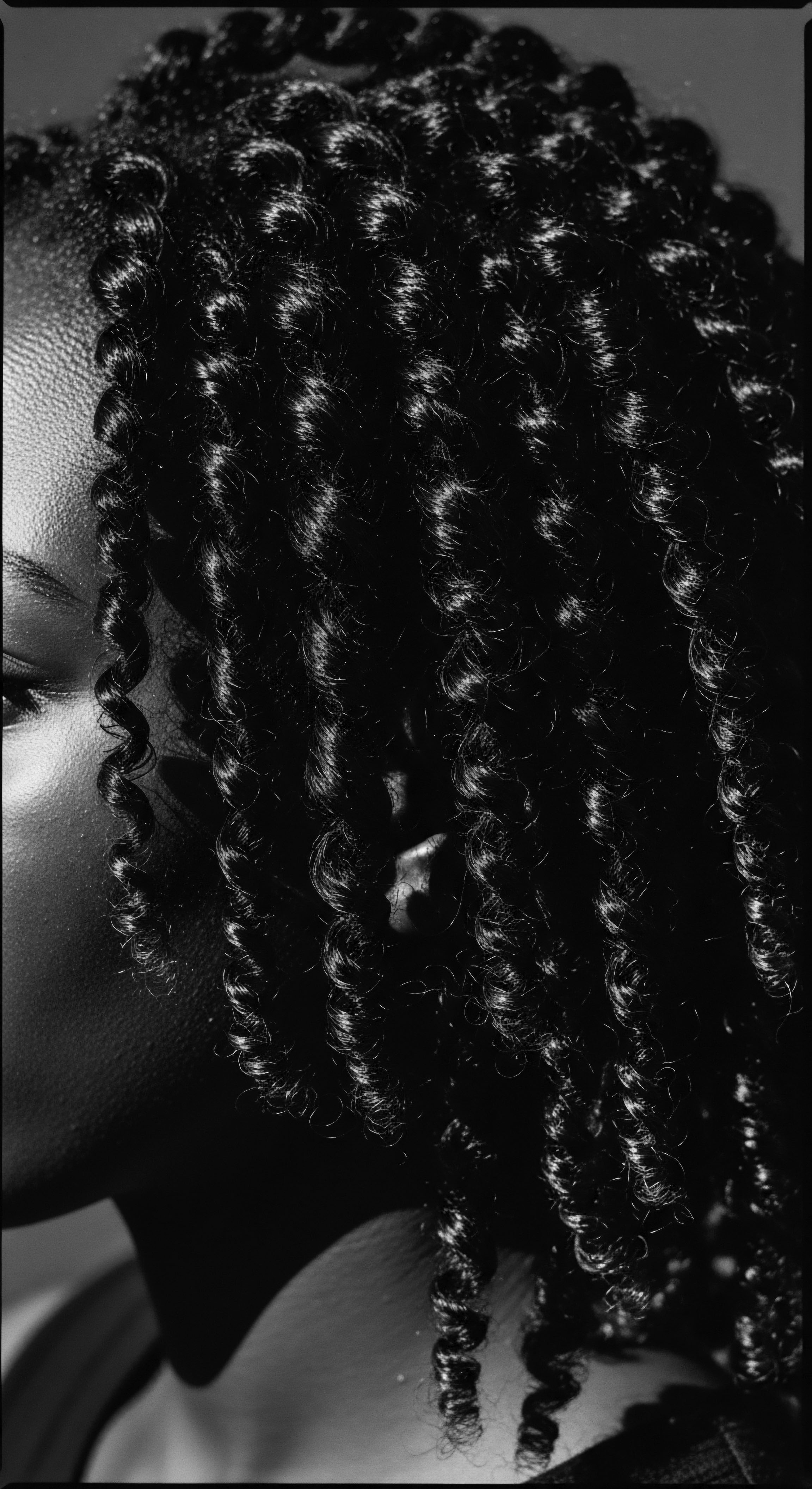
Textured Hair Classification Systems and Cultural Origins
While contemporary hair typing systems categorize textured hair by curl pattern (e.g. 3a, 4c), these modern classifications often overshadow the traditional understandings that pre-colonial African societies held. In ancient Africa, hair was a visible cue for social status, age, marital status, and even spiritual beliefs.
The very appearance of hair could communicate an individual’s place within the community. These cultural classifications, while not scientific in the modern sense, were far more meaningful in their societal context.
Consider the Himba tribe in Namibia, whose distinctive dreadlocked styles coated with red ochre paste symbolized their connection to the earth and their ancestors. Such practices represent a cultural classification system where hair, and the tools used to maintain it, were not merely about texture, but about identity and belonging. The tools employed, whether for applying ochre or shaping locs, were integral to these deep cultural expressions.
Historical tools served as extensions of ancestral wisdom, shaping textured hair to convey identity, status, and spiritual connection.

The Essential Lexicon of Textured Hair
The language surrounding textured hair care is as rich and varied as the hair itself, steeped in terms that have evolved through centuries of practice and adaptation. In traditional African societies, specific terms would have described not just hair types, but also the tools and techniques used. While a precise universal lexicon from ancient times is difficult to reconstruct, we can surmise that terms related to braiding, twisting, oiling, and adorning were deeply embedded in daily life and community dialogue.
Even today, certain terms carry echoes of this past. Consider the word Cornrows, which, in some regions, is also known as “canerows.” This style, characterized by tightly braided rows lying flat against the scalp, dates back to 3000 BCE in West Africa. The tools used for cornrows were often simple ❉ skilled hands, sometimes aided by a fine-toothed comb or a pointed stick to part the hair precisely. These terms, these names for styles and practices, are part of the heritage we carry forward.
- Combs ❉ Early combs, crafted from wood, bone, or ivory, were found in archaeological sites in Kush and Kemet (ancient Sudan and Egypt), dating back over 5,500 years. These were not simply detangling tools but often art, engraved with symbols of tribal identity, rank, or spiritual meaning.
- Styling Picks ❉ Beyond simple combs, picks with longer teeth were essential for styling and maintaining volume in denser hair types. Their presence in ancient burials points to their sacred status.
- Hairpins and Adornments ❉ Used for securing styles and as statements of beauty and status, these varied from simple wooden pins to elaborate metal plates, beads, cowrie shells, and even gold.
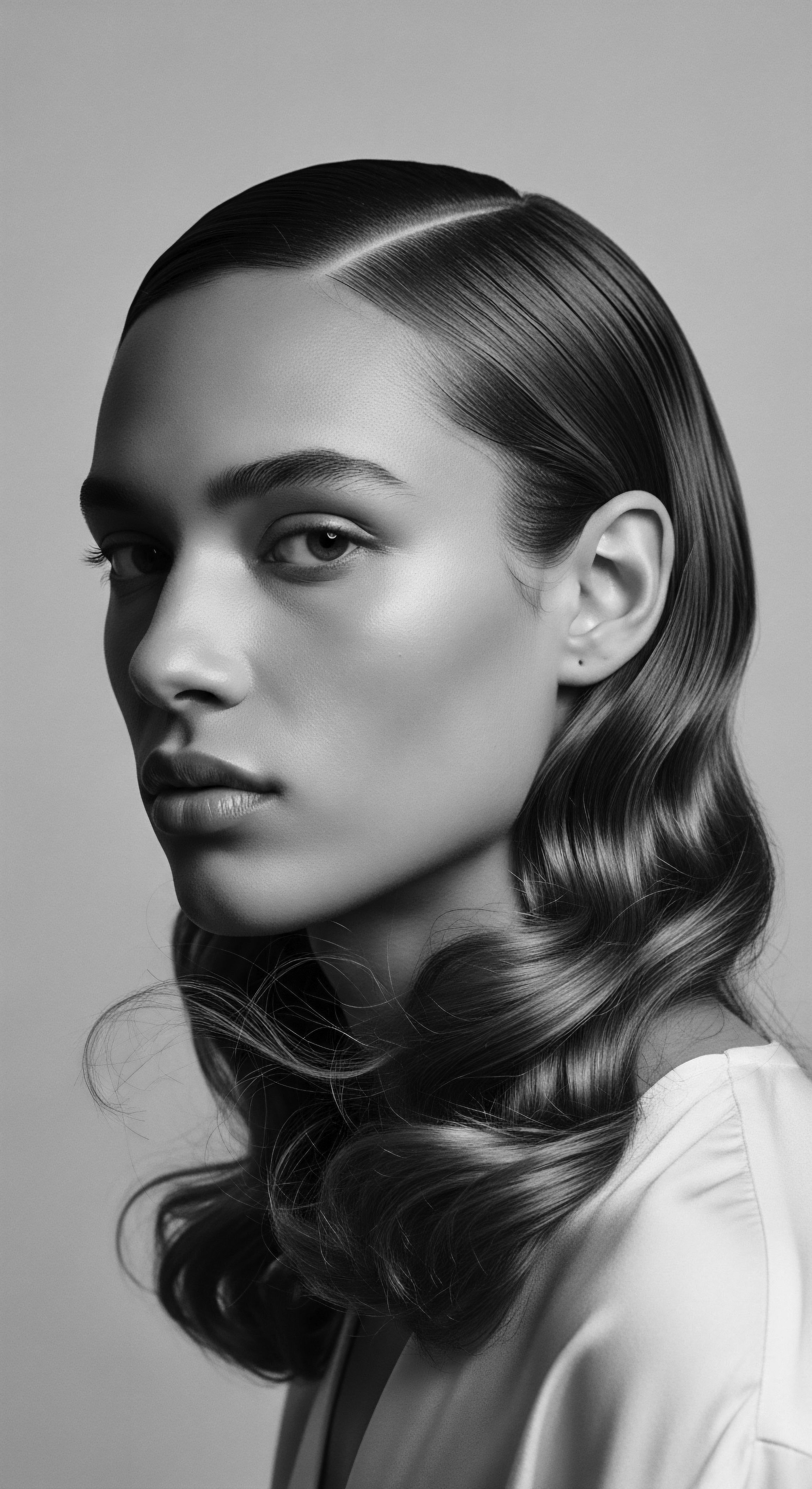
Hair Growth Cycles and Historical Influences
The cyclical nature of hair growth—anagen (growth), catagen (transition), and telogen (rest)—is a biological constant. However, historical factors profoundly shaped the health and appearance of textured hair. Nutritional availability, environmental conditions, and societal pressures all played roles.
In pre-colonial Africa, diverse diets rich in natural ingredients supported hair health. Traditional oils and butters, such as shea butter and coconut oil, were used to nourish and protect hair, reflecting an intuitive understanding of what was needed to support healthy growth cycles in varying climates.
The transatlantic slave trade drastically altered this. Enslaved Africans were often stripped of their traditional tools and natural hair care methods. Forced head shaving became a tool of dehumanization, a calculated act intended to erase identity and lineage.
In these harsh new conditions, individuals had to innovate, using whatever materials were available, like bacon grease, butter, or kerosene, as makeshift conditioners, or sheep fleece carding tools as combs. This period underscores the resilience of textured hair heritage, as practices adapted and survived against immense adversity.

Ritual
The cultural expression of textured hair, particularly through its historical tools, reveals itself most vividly in the sacred rituals of care, creation, and community. These were not mere acts of grooming but profound ceremonies that affirmed identity, fostered bonds, and preserved ancient wisdom across generations. The instruments, humble or grand, were imbued with meaning, becoming extensions of hands that nurtured not just hair, but spirit.
From the communal braiding circles of West Africa to the clandestine acts of hair care during enslavement, tools were central to a living, breathing archive of ancestral practices. They facilitated not only aesthetic transformations but also moments of teaching, storytelling, and collective resilience. How these tools were used, and the very act of their creation, speak volumes about the ingenuity and enduring spirit of Black and mixed-race people navigating their hair heritage.
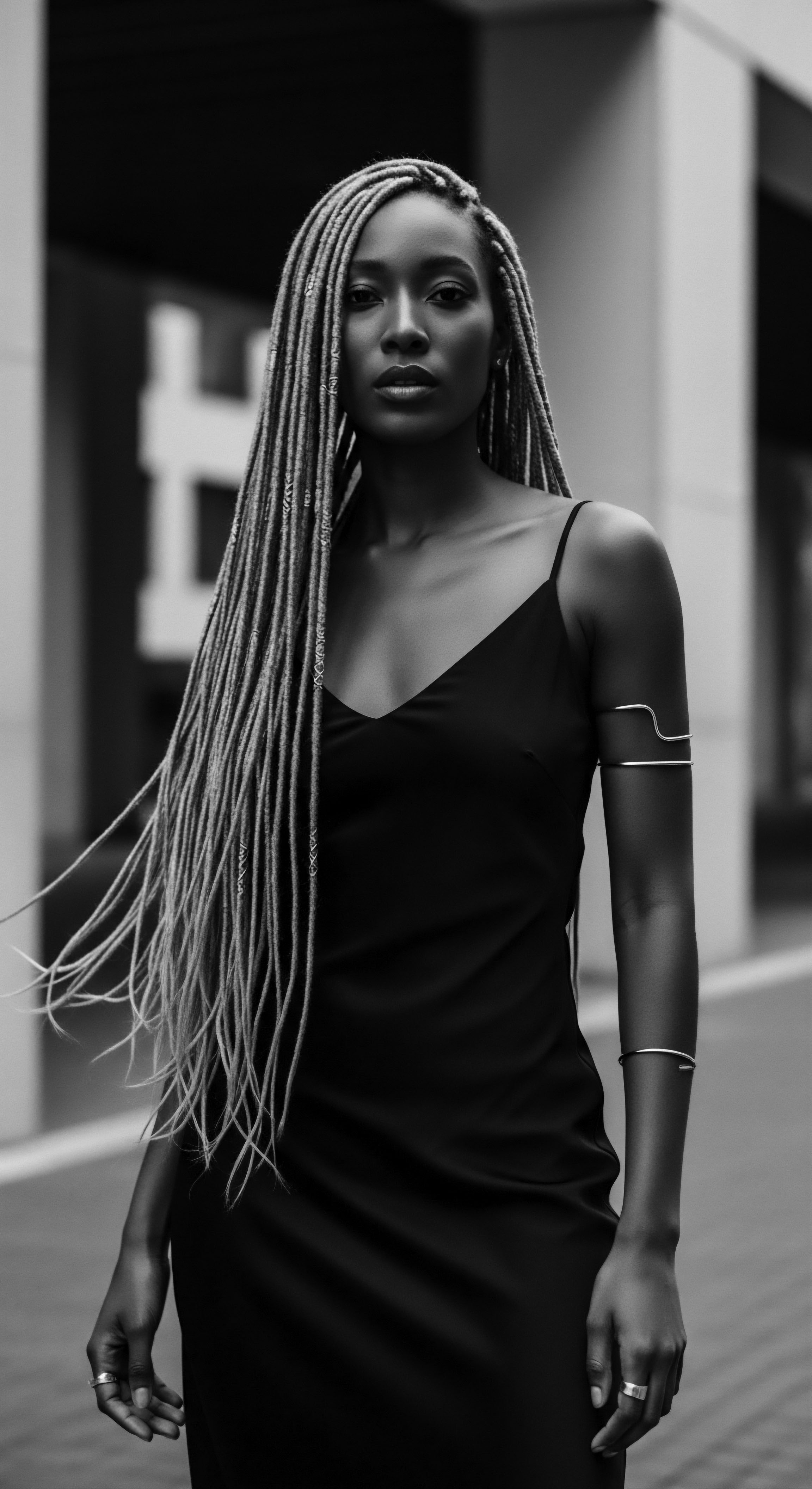
Protective Styling and Ancestral Roots
Protective styling, a cornerstone of textured hair care today, possesses deep ancestral roots. These styles, designed to shield hair from environmental damage and manipulation, were born of necessity and artistic expression in ancient African societies. Tools like specialized combs, pointed sticks, and even fingers were essential for creating intricate styles that could last for extended periods, reducing the need for daily handling. These included foundational styles such as Braids, Cornrows, and Locs, each carrying symbolic weight and practical benefits.
The practice of cornrowing, for instance, has been dated back to 3000 BCE in the Horn and West coasts of Africa. Skilled hands, often aided by simple pointed implements, would section and secure the hair close to the scalp, forming geometric patterns that communicated social status, age, or even tribal affiliation. This precise work required tools that allowed for clean partings and tight, uniform braids, ensuring longevity and protective efficacy. The artistry involved was a shared cultural practice, often taking hours or even days to complete, strengthening familial and communal bonds.
In pre-colonial Africa, hair tools enabled intricate styles that served as visual languages, conveying identity, status, and community ties.
| Historical Context Ancient African Civilizations (e.g. Egypt, Kush) |
| Tool Examples Wooden and ivory combs, bone picks, metal pins, natural fiber cords |
| Cultural or Practical Significance Often decorated with symbols, used for detangling, parting, and securing elaborate wigs and braided styles. Signified status and spiritual connection. |
| Historical Context Transatlantic Slave Trade Era |
| Tool Examples Makeshift combs (wood, animal bone, metal scraps), hands, found objects (e.g. leaves, sticks) |
| Cultural or Practical Significance Adaptation under duress; used for basic hygiene and to maintain a sense of self. Braids served as coded maps and storage for seeds. |
| Historical Context Post-Emancipation to early 20th Century |
| Tool Examples Hot combs, straightening irons (early forms), rudimentary hair grease formulations |
| Cultural or Practical Significance Driven by societal pressures to conform to Eurocentric beauty standards. Tools allowed for temporary straightening and manipulation of texture. |
| Historical Context Mid to Late 20th Century (Natural Hair Movement) |
| Tool Examples Afro picks (with political motifs), wider-toothed combs, bare hands |
| Cultural or Practical Significance Symbol of pride and resistance against oppressive beauty norms. Tools designed to celebrate and maintain natural volume and texture. |
| Historical Context Tools have constantly adapted, reflecting both the practical needs of textured hair and the evolving cultural expressions tied to its heritage. |
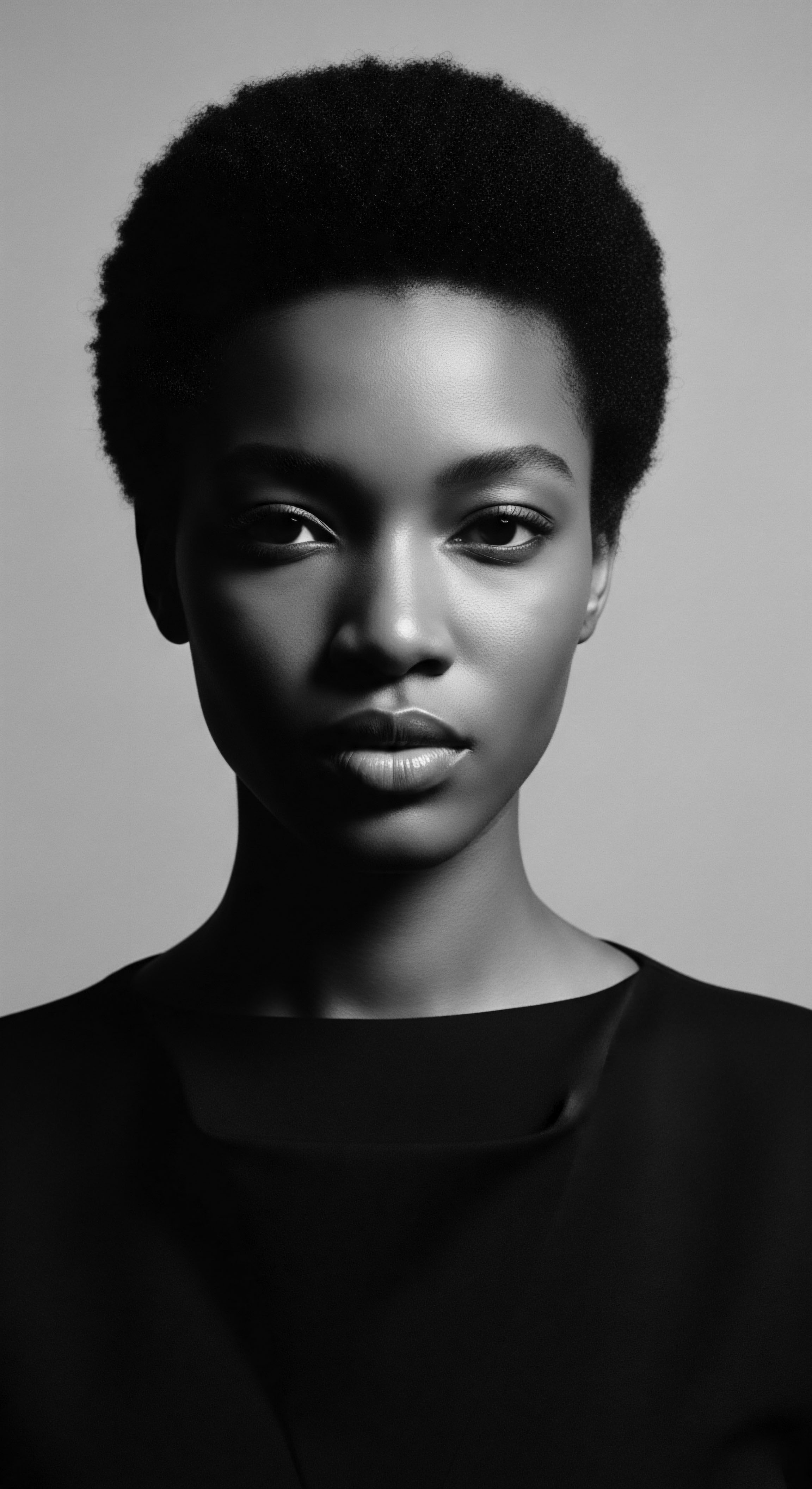
Natural Styling and Definition Techniques
Long before commercial products, ancestral communities understood the natural inclination of textured hair to curl and coil. Tools for defining these inherent patterns were often simple and intuitive. Fingers, of course, were the primary instruments for twisting and coiling hair into defined sections.
But beyond the hands, specific tools helped in shaping and holding these styles. The earliest forms of picks, with their elongated teeth, would have been used not just for detangling but for lifting and separating coils to achieve volume and definition, a practice still central to afro styling today.
The Himba people of Namibia, for instance, used a mixture of butterfat and red ochre paste to coat their hair, not just for color, but to define and hold their unique locs, reflecting their connection to the earth. The application of such mixtures would have involved tools for mixing and for precise, even distribution across the hair. This highlights how styling techniques and the tools used were deeply intertwined with natural elements and symbolic meanings, creating a holistic approach to hair care rooted in heritage.

Wigs, Hair Extensions, and Historical Context
The concept of hair extensions and wigs is far from a modern invention. In ancient Egypt, for example, elaborate wigs crafted from human hair, wool, or plant fibers were significant symbols of status and spirituality for the elite. These wigs were intricately braided and adorned with precious materials, requiring specialized tools for their creation and maintenance. While not directly tools for textured hair growth, the very notion of hair augmentation speaks to a long-standing desire for versatility and expression through hair, echoing in contemporary Black hair culture where extensions serve as a protective styling option and a canvas for personal style.
The legacy of these historical practices continues to resonate. In the African diaspora, the use of hair extensions has become a means for Black women to honor their African roots and express cultural pride, particularly since the natural hair movement of the early 2000s, which saw a resurgence of pride in natural textures. These extensions, while modern in material, continue a centuries-old tradition of using external hair to achieve desired styles, protect natural hair, and convey identity.

Heat Styling and Thermal Reconditioning
The history of heat styling for textured hair, particularly in the diaspora, is a complex one, often intertwined with societal pressures and the painful legacy of Eurocentric beauty standards. While some ancient African cultures might have used warmed implements for specific ceremonial styles, the widespread adoption of thermal reconditioning tools became prominent during the late 19th and early 20th centuries. The Hot Comb, a metal comb heated over fire or a stove, became a common tool for temporarily straightening coily and kinky textures.
The invention of the hot comb in the 1880s, and its popularization by figures like Madam C.J. Walker, marked a significant shift. While these tools offered a means for Black women to achieve styles that were deemed “socially acceptable” in a discriminatory society, they also contributed to the concept of “good hair” being synonymous with straight hair. Understanding these tools requires acknowledging the historical context of systemic pressure and the ingenious ways Black women adapted, sometimes using dangerous makeshift methods like kerosene and butter to achieve desired looks.
- Fine-Toothed Combs ❉ Essential for precise parting, especially for intricate braiding and cornrow styles. Their ancient counterparts were often carved from bone or wood.
- Styling Implements ❉ Pointed tools, sometimes sticks or specially designed pins, assisted in separating and manipulating small sections of hair for twists and coils.
- Oiling Sticks/applicators ❉ Tools for applying traditional oils and butters, ensuring even distribution for moisture and scalp health, reflecting long-standing practices of hair oiling in West African traditions.
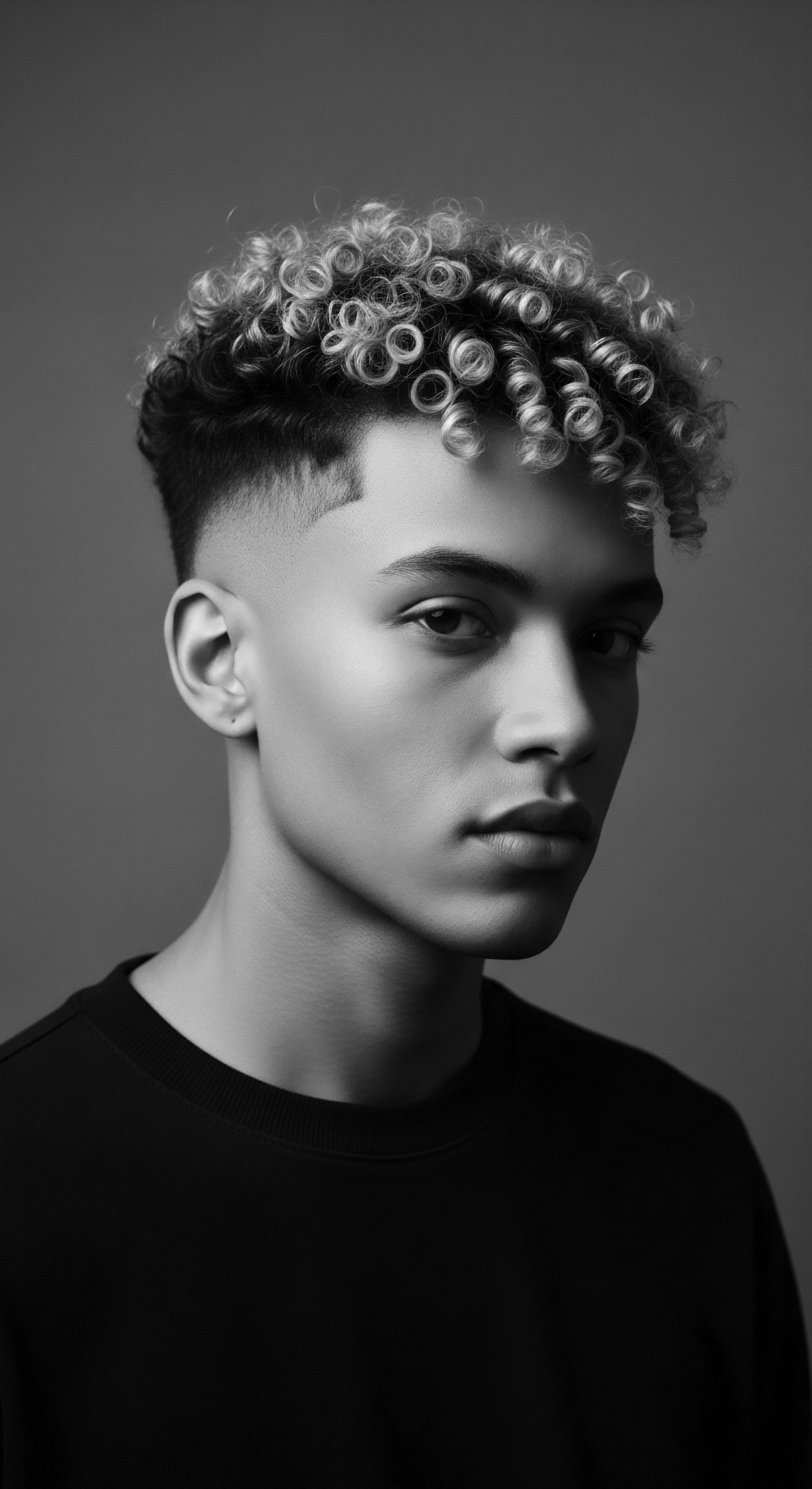
The Complete Textured Hair Toolkit
The textured hair toolkit, whether ancient or modern, speaks to an ongoing dialogue between human ingenuity and the unique needs of coily, curly, and kinky hair. In ancient Africa, the toolkit was remarkably diverse, reflecting the vast array of styles and the communal nature of hair care. These were not mass-produced items, but often hand-crafted pieces, sometimes adorned with cultural symbols. The afro comb , with a history spanning over 5,500 years, is a prime example.
Archaeological findings in Kush and Kemet reveal wooden, bone, and ivory combs buried with their owners, signifying their sacred status. These were not just grooming tools; they were art, legacy, and power.
During the transatlantic slave trade, access to these traditional tools was often denied. Yet, resilience prevailed. Enslaved people crafted rudimentary combs from scavenged wood, metal scraps, or even animal bones. Headscarves or pieces of cloth also served as essential tools for protection and moisture retention.
These adaptive tools, born of necessity, bear silent witness to the enduring spirit of Black people in maintaining their identity and heritage against all odds. Today’s tools, while more technologically advanced, continue to serve the same fundamental purpose of care, protection, and expression, building upon centuries of ancestral wisdom.

Relay
The enduring legacy of historical tools in the cultural expression of textured hair continues its relay into our present, offering a deeper understanding of identity, self-care, and collective strength. This is not merely an academic exercise; it is an active connection to ancestral wisdom, a validation of practices that predate modern science, and a conscious assertion of heritage in a world that often sought to erase it. The roles played by these tools, both simple and sophisticated, extended far beyond the physical manipulation of hair; they were instrumental in maintaining spiritual connections, transmitting knowledge, and navigating challenging social landscapes.
To understand these roles is to recognize how deeply embedded hair care is within the broader narrative of Black and mixed-race experiences. It prompts us to consider how past innovations continue to inform contemporary regimens, how historical adversity shaped adaptive solutions, and how the physical tools themselves became symbols of resilience, cultural preservation, and eventually, unapologetic self-love. This exploration reveals the interplay between biology, history, and profound cultural meaning, all centered on the unique story of textured hair.

Building Personalized Textured Hair Regimens from Ancestral Wisdom
The concept of a personalized hair regimen, so prevalent today, finds its echoes in ancestral practices where hair care was inherently individualized, though shared communally. Historical tools allowed for the nuanced application of natural ingredients, tailored to specific hair needs and environmental conditions. For instance, in West African traditions, oils and butters were consistently used to keep hair moisturized in hot, dry climates, often paired with protective styles to maintain length and health. The tools for applying these emollients were likely simple yet effective, perhaps small gourds for storage or flat sticks for spreading thick butters, ensuring optimal absorption.
The understanding that hair health was intrinsically linked to scalp health also guided these historical regimens. Tools for scalp massage, perhaps smooth stones or specialized combs, would have been employed to stimulate circulation and promote the delivery of nutrients, a principle validated by modern trichology. This holistic approach, passed down through generations, emphasizes that true hair care goes beyond superficial styling, reaching into the very root of wellbeing. It reminds us that our ancestors were adept scientists in their own right, observing, experimenting, and refining practices based on lived experience and deep connection to their natural environment.

The Nighttime Sanctuary and Bonnet Wisdom
The practice of protecting textured hair during sleep, often with head coverings like bonnets or scarves, holds a significant historical basis. While modern bonnets are often silk or satin, the underlying principle of preserving moisture and preventing friction damage has ancient roots. In many African cultures, headwraps were not only statements of beauty and social status but also served practical purposes, including protection from the sun and the elements. This protective function would naturally extend to preserving hairstyles and hair health during rest.
During the era of enslavement, head coverings gained an added, complex layer of meaning. Forced to cover their hair by discriminatory laws, Black women transformed these symbols of oppression into acts of resistance and personal dignity. They adorned their headwraps with colorful fabrics and jewels, turning what was intended as a mark of subservience into a glamorous and empowering fashion statement. While not direct “tools” in the sense of combs, these wraps were instrumental in both protecting hair and asserting identity, creating a private sanctuary for hair that would otherwise be exposed to harsh conditions and societal judgment.

Ingredient Deep Dives for Textured Hair Needs
The effectiveness of historical hair care tools was often amplified by the intelligent use of natural ingredients, many of which are now celebrated in contemporary wellness. These ancestral ingredients, applied with specific tools, addressed the unique moisture and strength requirements of textured hair. Consider the pervasive use of Shea Butter (Vitellaria paradoxa) across West Africa, applied to skin and hair for deep moisture and repair.
This natural butter, rich in vitamins A and E, was traditionally used to keep skin soft and protect against harsh weather. Its application to hair would have involved tools for warming and softening, perhaps simple wooden spatulas or even just hands, ensuring it could be evenly worked into dense curls.
Similarly, oils like Coconut Oil, Argan Oil, and Castor Oil, used across various African and diasporic communities for centuries, were (and remain) vital. These oils, applied with combs or fingers, helped seal in moisture, reduce breakage, and promote scalp health. The wisdom embedded in these choices of ingredients, often locally sourced and sustainably harvested, speaks to a deep ancestral knowledge of botanical properties. These ingredients, combined with the tools for their application, formed a powerful synergy, demonstrating a sophisticated understanding of hair biology long before chemical compounds dominated the beauty industry.
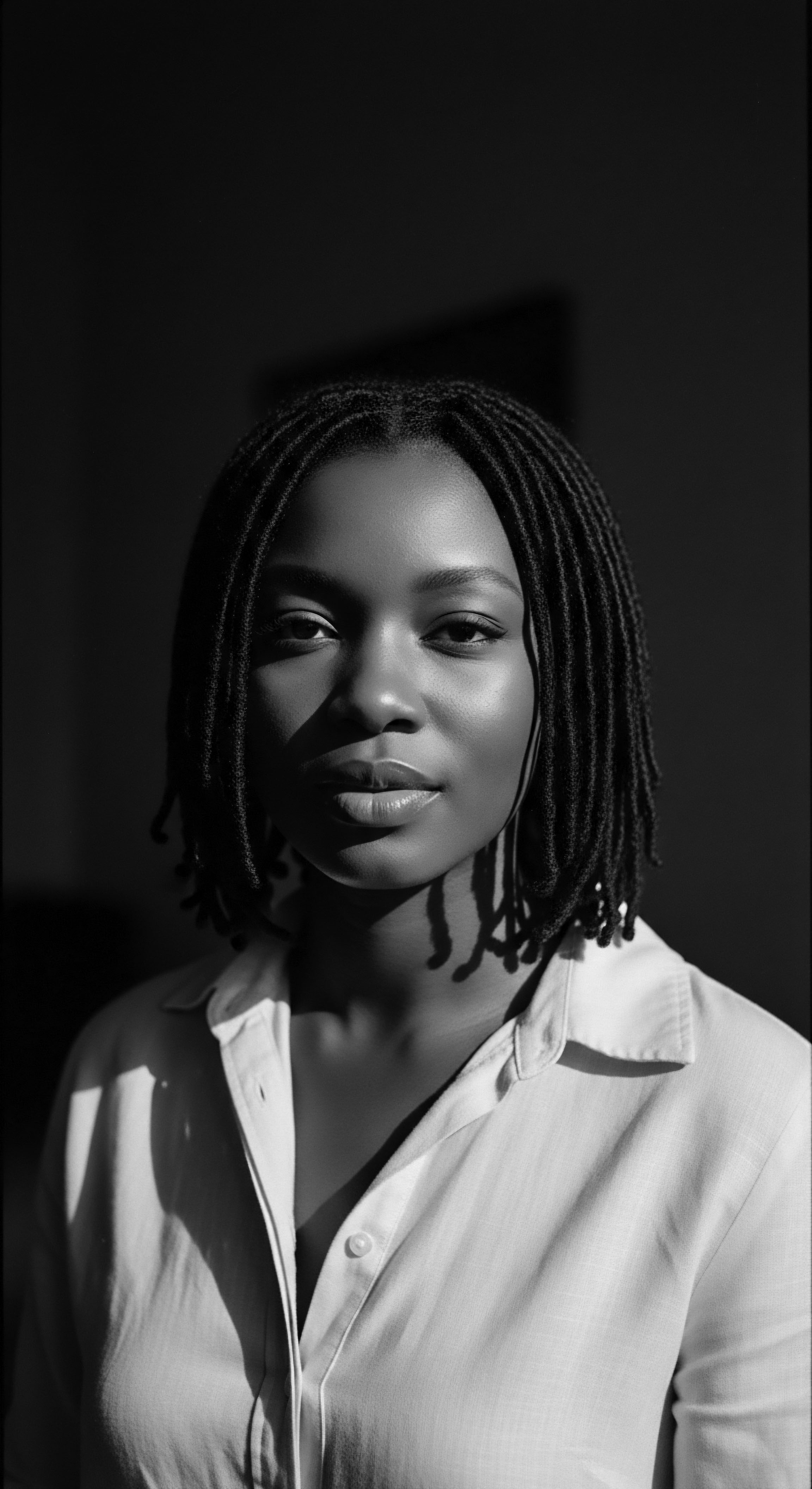
Textured Hair Problem Solving
Historical tools were central to ancestral strategies for problem-solving common textured hair issues, such as dryness, breakage, and tangles. Without modern conditioners or detangling sprays, the approach relied on mechanical manipulation and targeted application of natural emollients. Wide-tooth combs, even in their primitive forms, were essential for gently working through coils without causing excessive breakage.
The ritual of oiling, practiced with intent, used specific oils to provide the necessary slip and lubrication for detangling. The careful use of these tools, combined with patience and generational knowledge, mitigated common challenges.
One powerful historical example of problem-solving through hair tools involves the extraordinary use of cornrows during the transatlantic slave trade. As enslaved Africans sought escape, they used intricate cornrow patterns to create coded maps, indicating routes to freedom or safe houses. Small tools, like pointed sticks, would have been essential for the precise sectioning and braiding required for such detailed, clandestine cartography. This chillingly brilliant use of a styling tool transformed hair from a mere aesthetic feature into a literal instrument of survival, a testament to unparalleled ingenuity and resilience in the face of unimaginable adversity.
(Byrd and Tharps, 2001, p. 57)
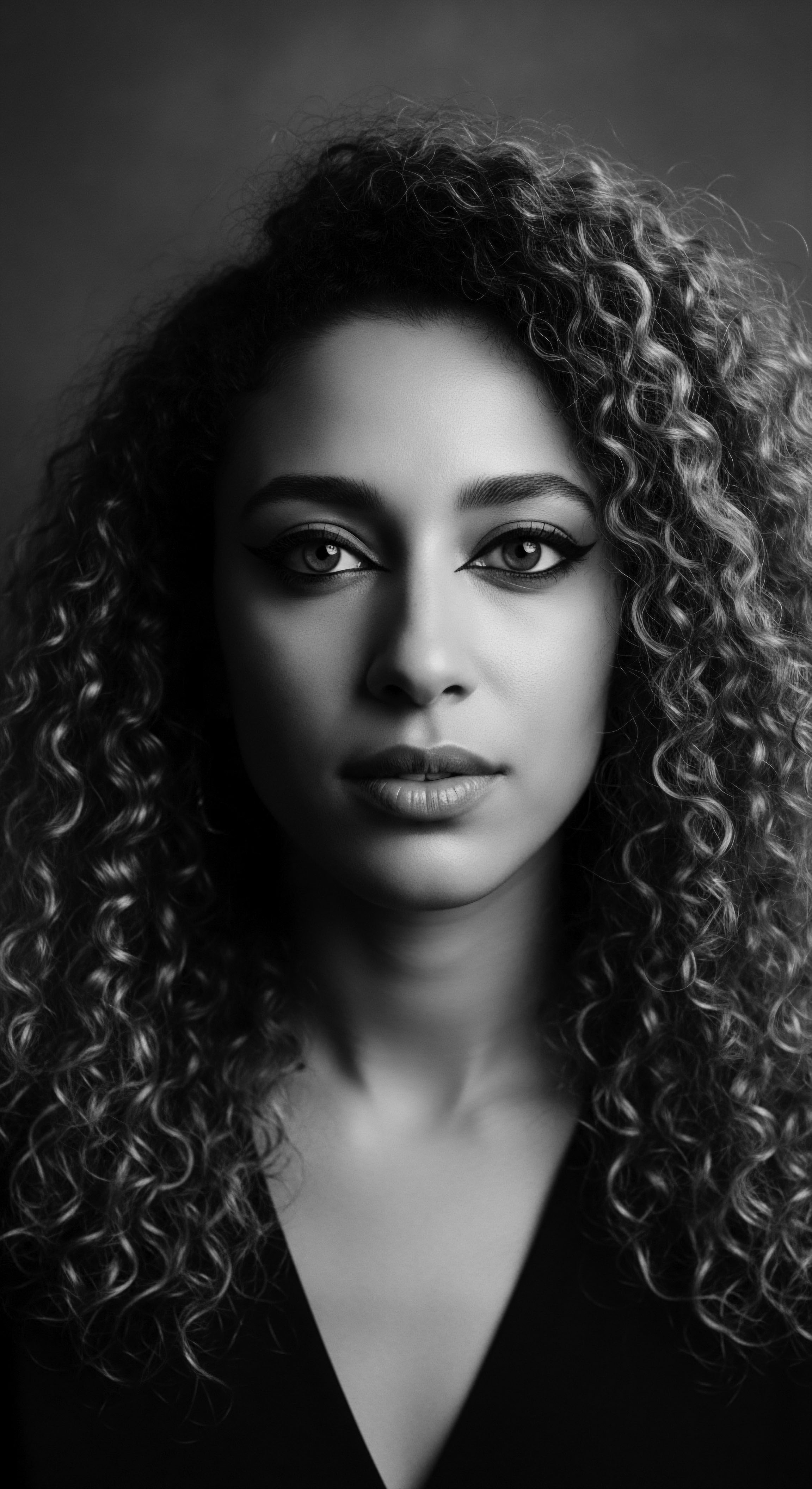
Holistic Influences on Hair Health from Ancestral Philosophies
Ancestral philosophies viewed hair health as an integral component of overall well-being, deeply connected to spiritual and communal harmony. The tools used were not just physical objects; they were extensions of this holistic worldview. Hair was often seen as a spiritual gateway, the highest point of the body connecting individuals to the divine. Thus, the tools used for its care were treated with reverence, sometimes adorned with protective symbols.
The communal act of hair styling, often involving several generations, transformed hair care into a powerful social ritual. Tools like combs and hands, passing between family members, facilitated storytelling, the transmission of cultural history, and the reinforcement of social bonds. This collective care system, mediated by shared tools and practices, ensured that knowledge about textured hair was preserved and passed down. It meant that hair health was not an isolated concern but a shared responsibility, a thread connecting individuals to their heritage and to each other.

Reflection
The journey through the historical roles of tools in the cultural expression of textured hair is not a mere recounting of artifacts and past practices. It is a profound meditation on the enduring soul of a strand, a testament to the resilience, creativity, and deep cultural heritage of Black and mixed-race people. From the meticulously carved combs of ancient kingdoms to the makeshift implements of survival during enslavement, each tool holds a memory, a whisper of a hand that once held it, an echo of a life lived, a story told.
These instruments, humble as some may seem, were never simply functional. They were extensions of a vibrant cultural language, vessels of spiritual connection, and silent witnesses to generations of innovation. They represent a legacy of care and self-determination that has, against incredible odds, persisted and evolved.
Understanding their historical significance allows us to truly appreciate the depth of textured hair heritage, not as a static relic, but as a living, breathing archive of identity, resistance, and beauty that continues to shape our present and guide our future. It reminds us that our hair, in all its diverse and magnificent forms, carries the weight of history and the promise of tomorrow, forever tethered to the wisdom of those who came before.

References
- Byrd, A. & Tharps, L. L. (2001). Hair Story ❉ Untangling the Roots of Black Hair in America. St. Martin’s Griffin.
- Afriklens. (2024, November 1). African Hairstyles ❉ Cultural Significance and Legacy.
- BLAM UK CIC. (2022, September 15). The history of Black Hair.
- Odele Beauty. (2021, February 22). 6 Things Everyone Should Know About Black Hair History.
- Library of Congress. (n.d.). Heavy is the Head ❉ Evolution of African Hair in America from the 17th c. to the 20th c.
- CURLYTREATS Festival. (2025, February 8). Afro comb ❉ the cultural and political legacy behind this iconic hair tool.
- The Gale Review. (2021, November 23). African Hairstyles – The “Dreaded” Colonial Legacy.
- Danified Hair Co. (2024, September 16). The Cultural Significance of Hair Extensions in the Black Community.
- Africa Rebirth. (2022, April 18). The African Tales of The Historical 7000 Year Old Afro Comb.
- Assendelft. (2023, July 18). Pre-Colonial African Hairstyles ❉ A Journey Through Time and Culture.
